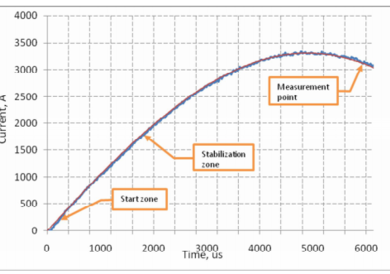Quality improvement methods for power semiconductors measurements of static losses
Alexey Poleshchuk/ Engineer of Automation Lab
Sustained increase of capacity of electric power and electric converter units, connected with the development of industry and power-engineering leads to the constant enhancement of characteristics and load capacity of power semiconductors. Thus, requirements to the maximum current load of power thyristors and diodes, limited by heat-release losses in a semiconductor element and the intensity of heat removal from the die, are also increasing.
Power semiconductor manufacturers do their best to the maximum reduction of conducting static losses and preserving all the rest power semiconductor characteristics at the required level. This approach results in the enough significant spread of semiconductor parameters in the same lot even in case of using modern technologies. Therewith sufficiently small spread of parameters within 10-15% can have key influence on comparative load capacity of semiconductors due to the restrictions of maximum heat removal from the die for the large currents range.
From the other side, it’s often necessary to commute the currents higher than current-carrying capacity of large diameters dies (90mm and more). In this case it’s necessary to connect power semiconductors in parallel in a single unit where the devices should be precisely selected according to their characteristics in order to provide symmetric semiconductor load and annealing of heat release.
The above-mentioned tasks determine the necessity of maximum precise measurements of semiconductor characteristics, responsible for the static losses of conductivity (in this case - peak on-stage voltage (VTM)), for their correct classification and selection in groups for parallel connection.















